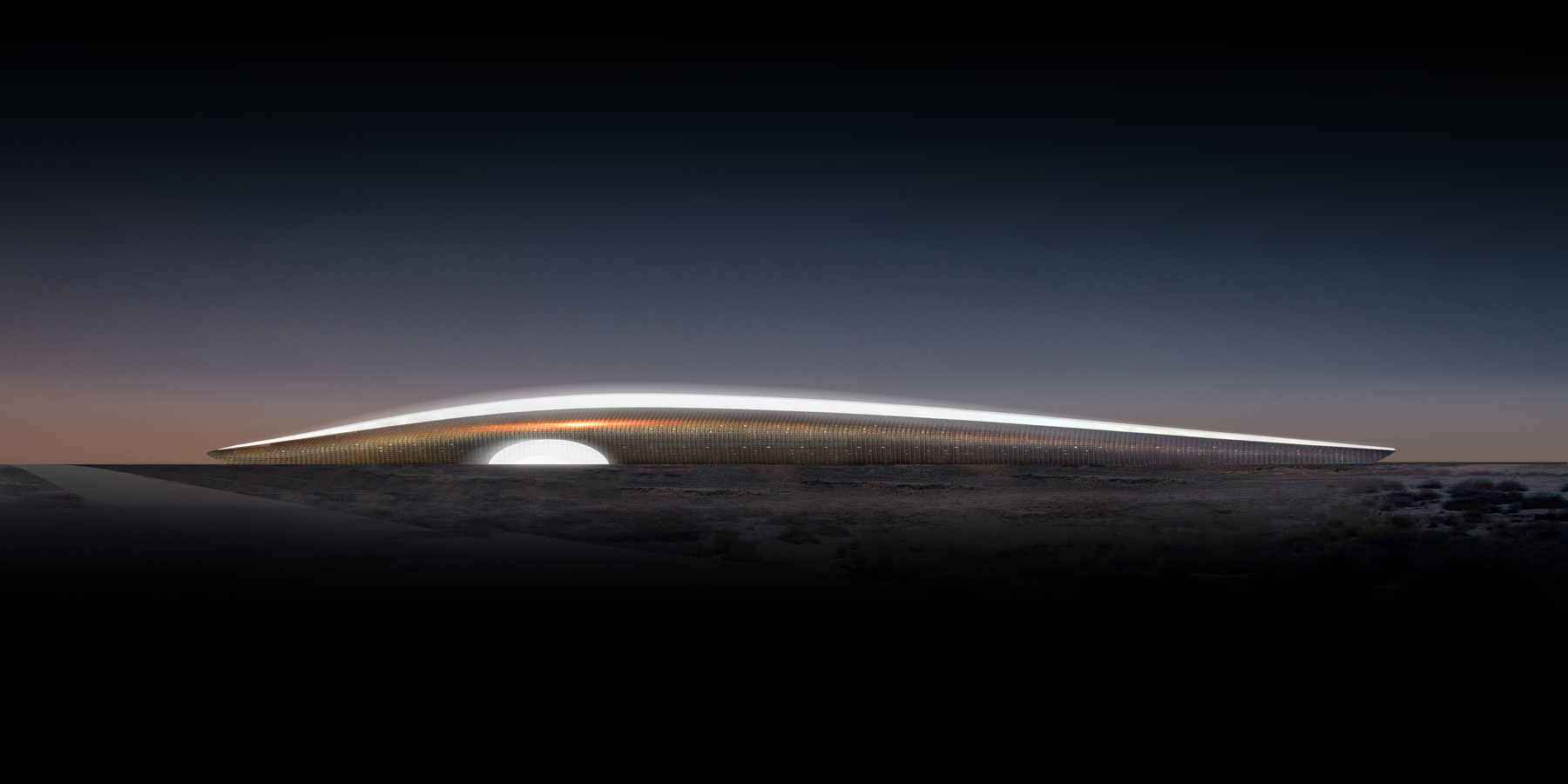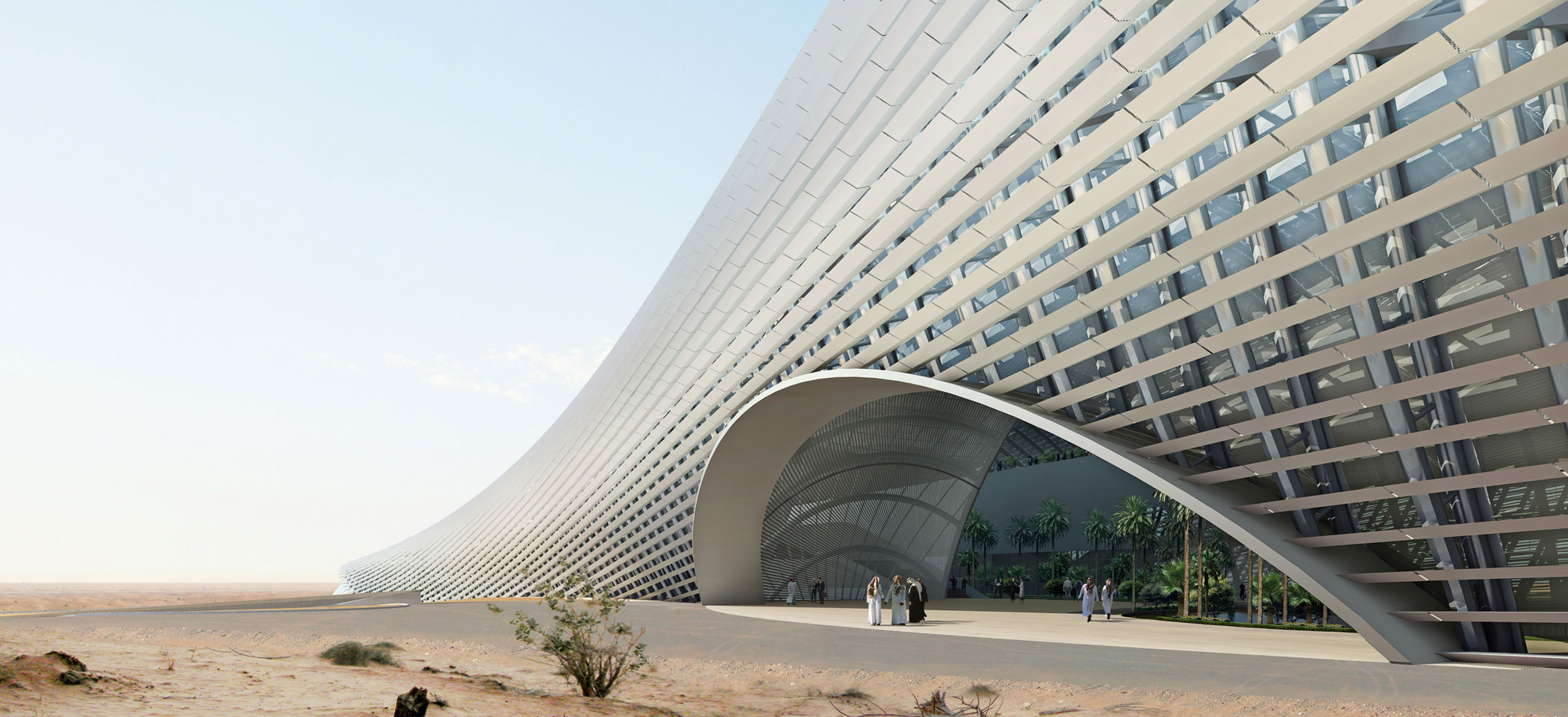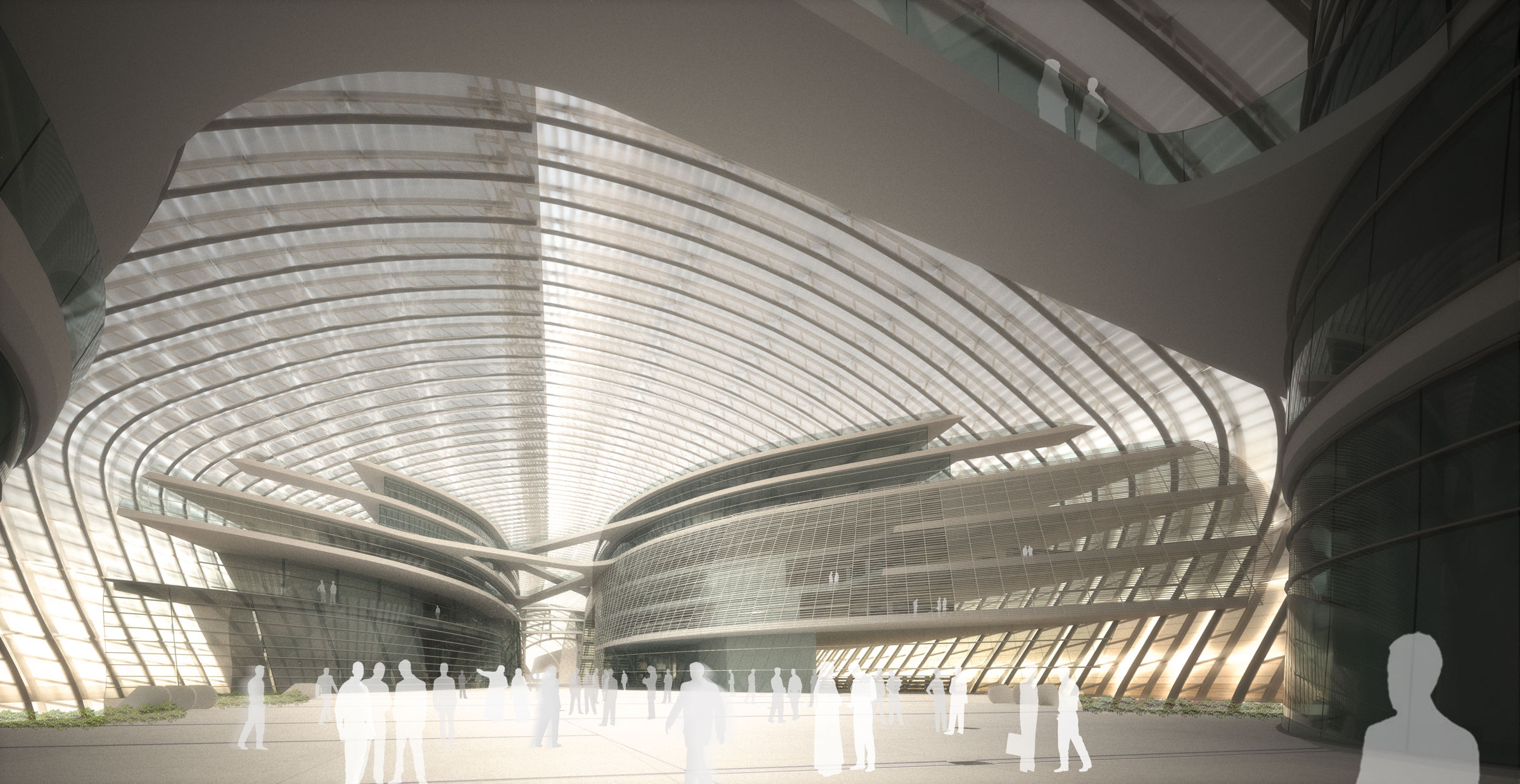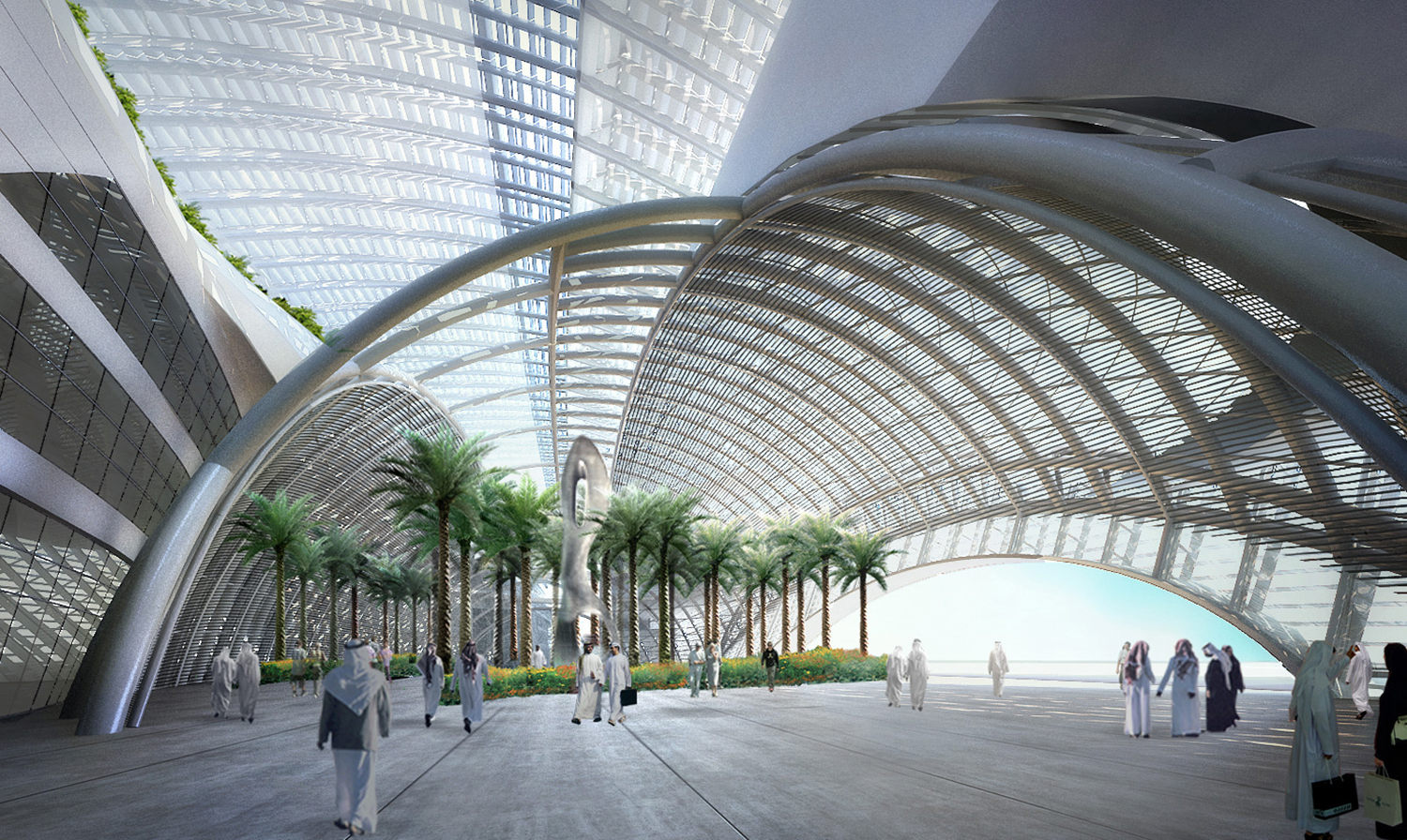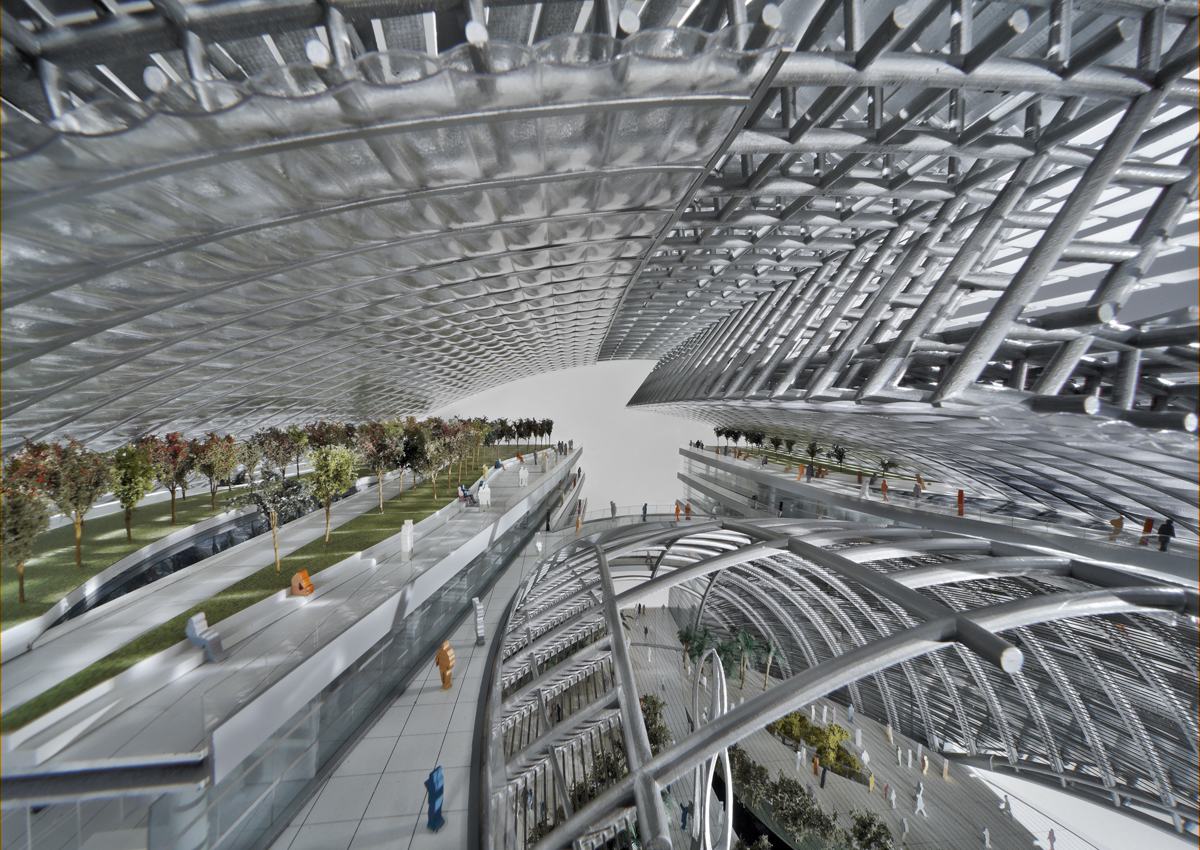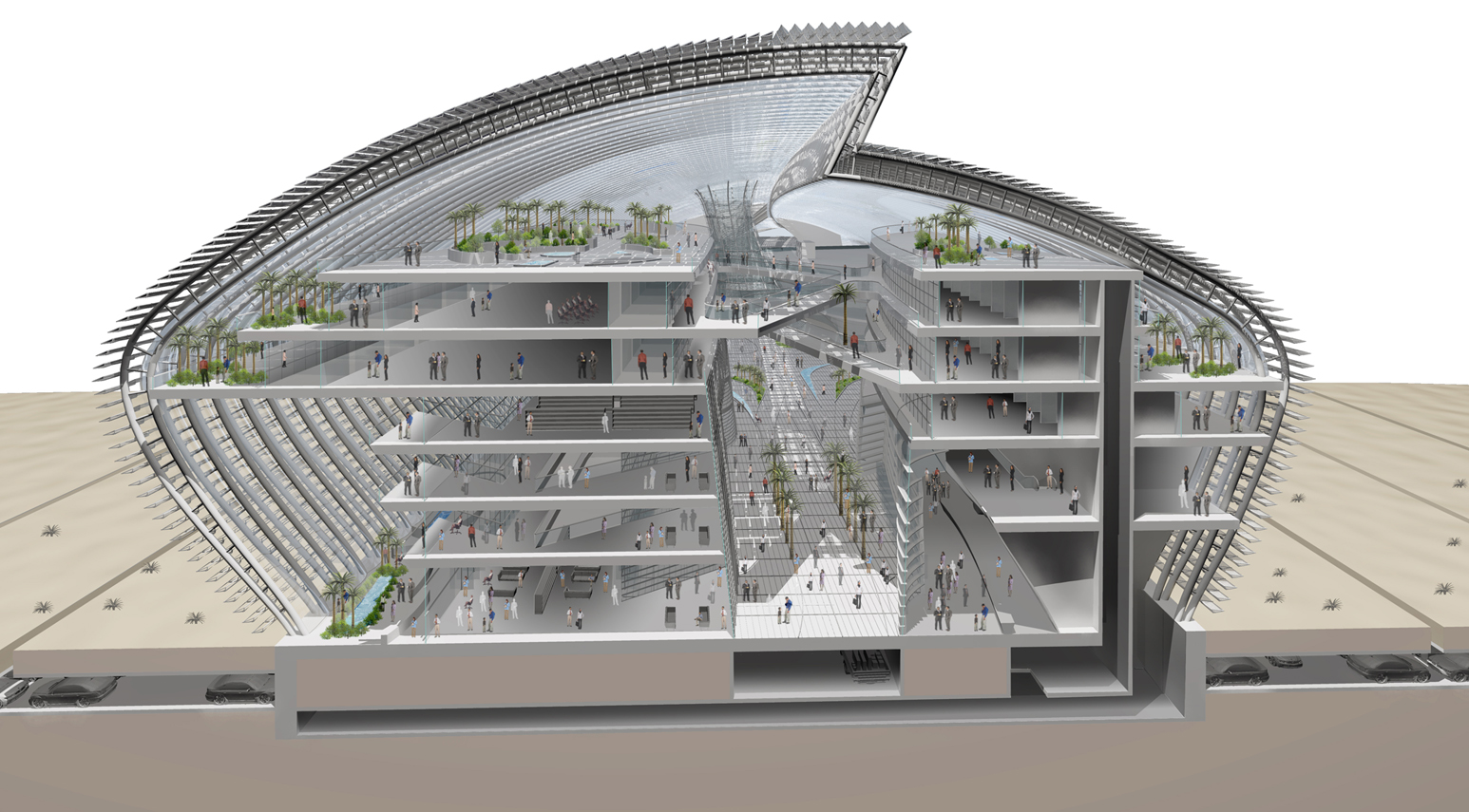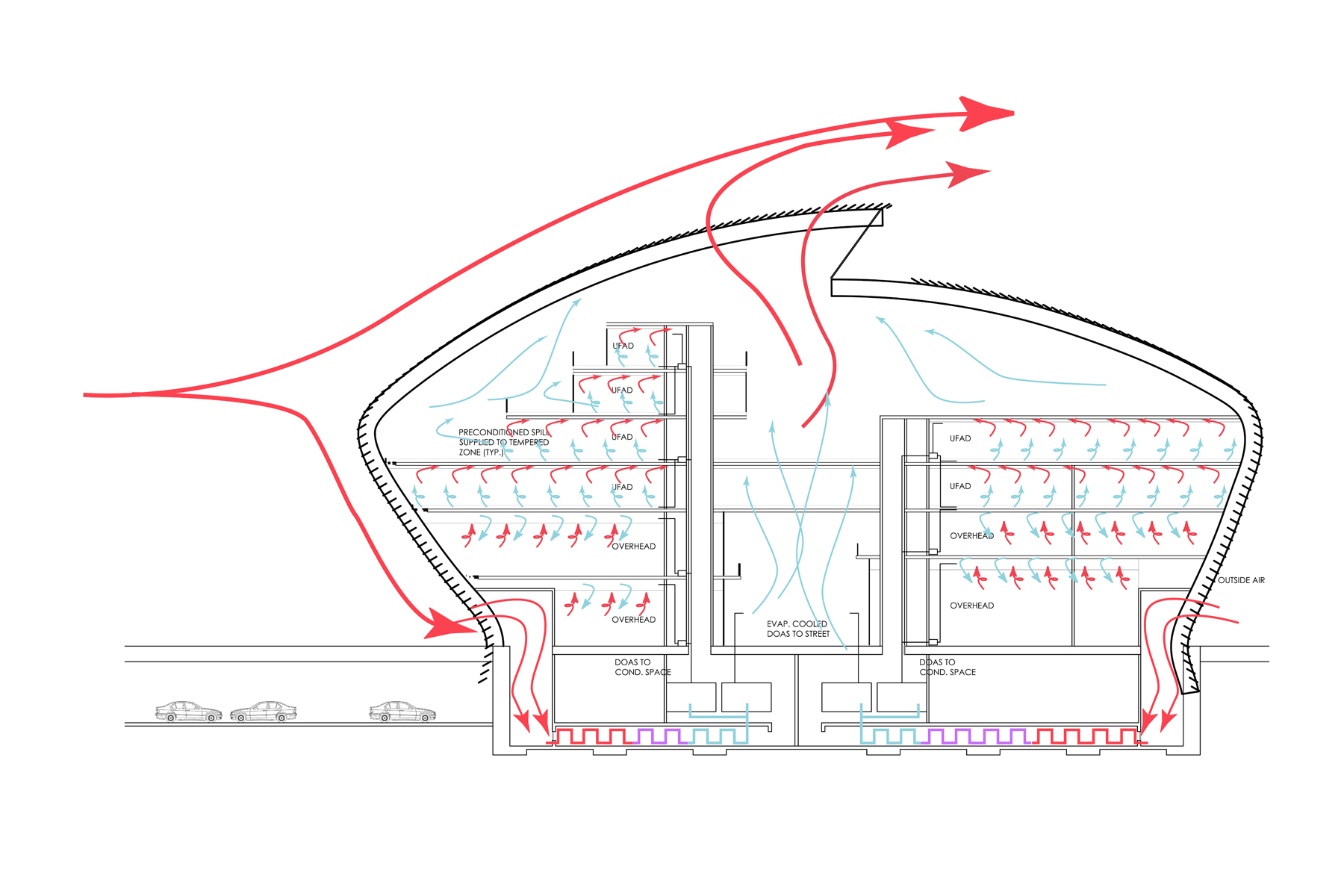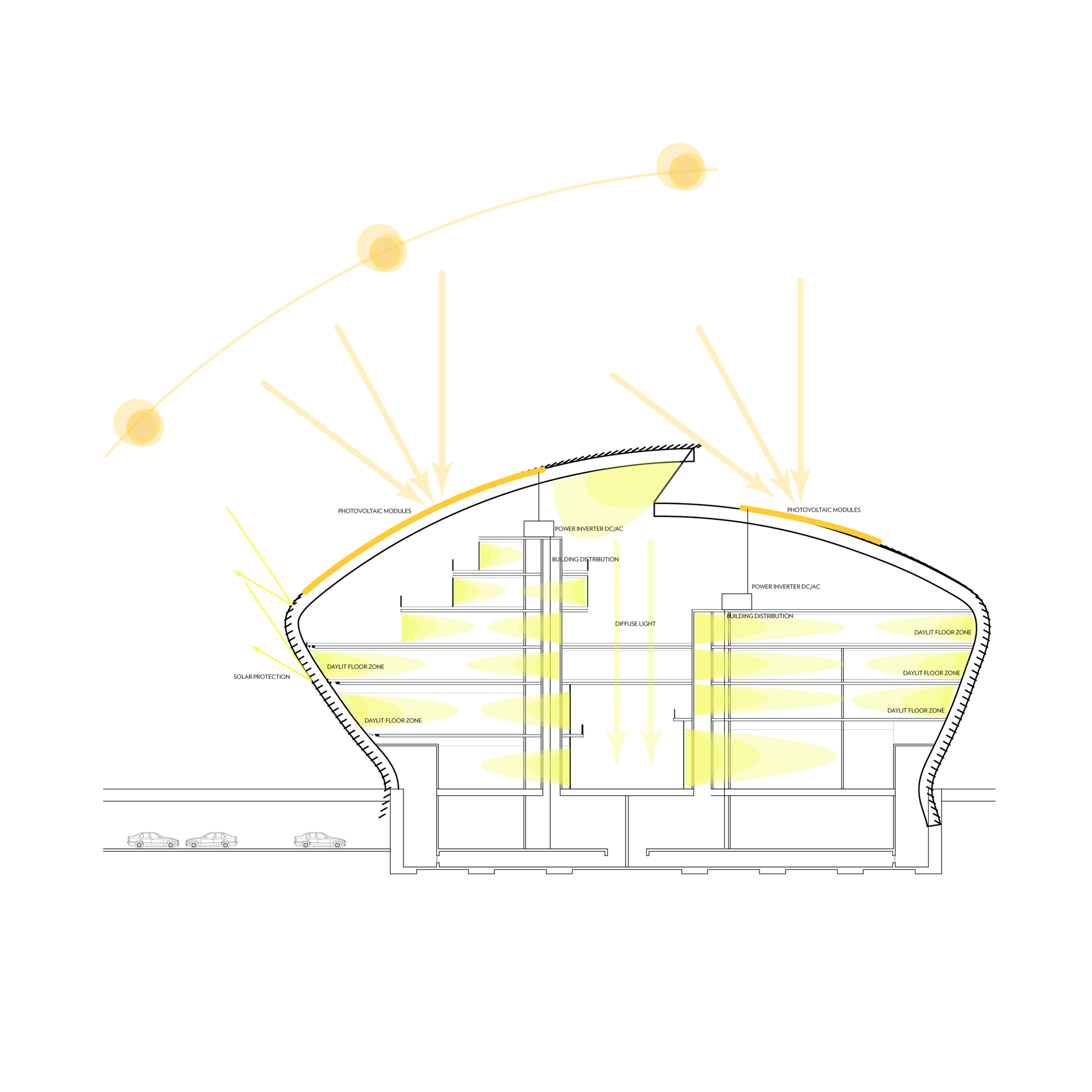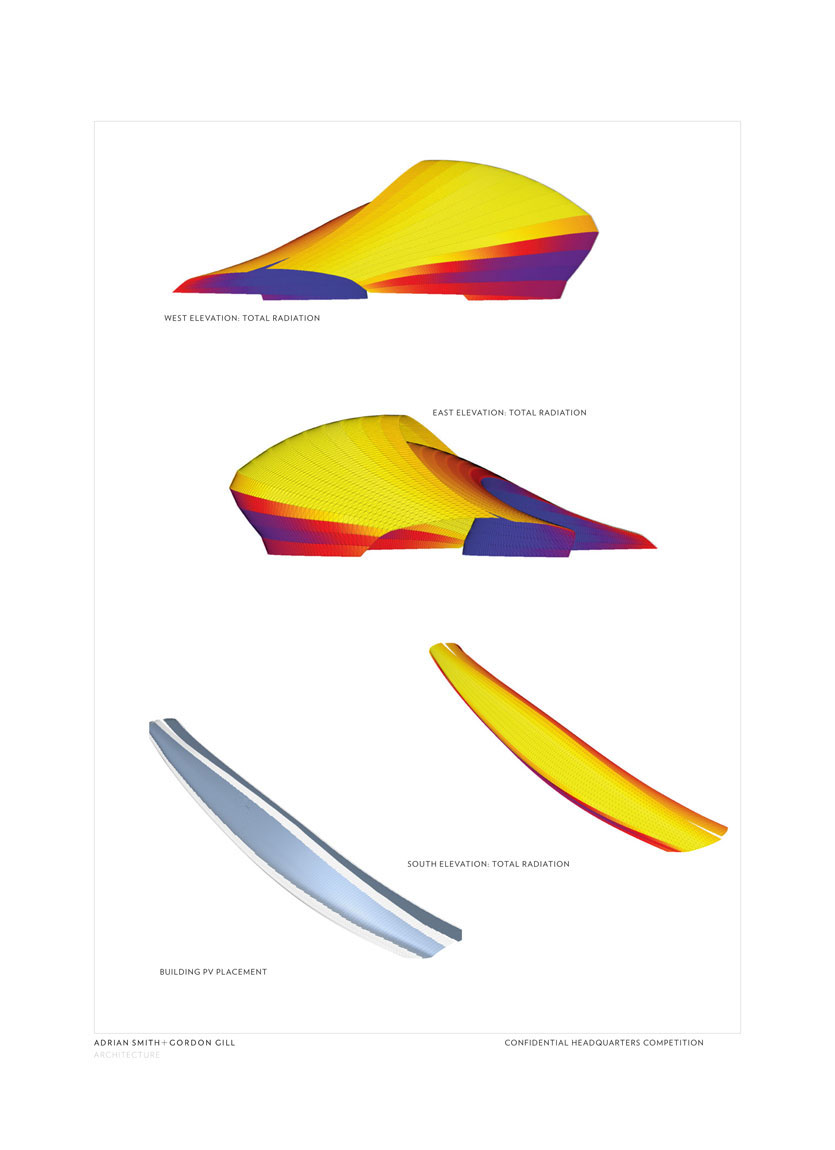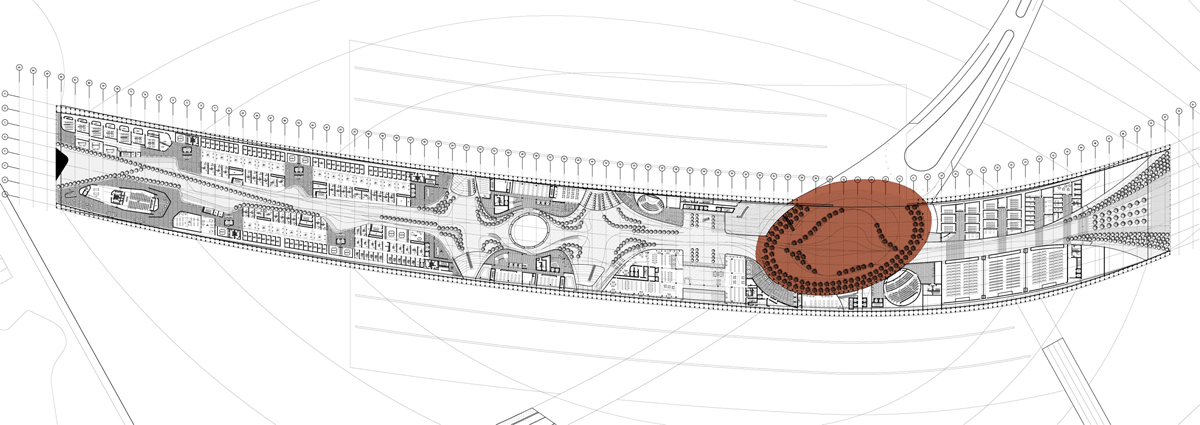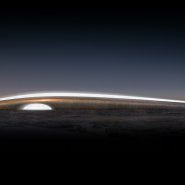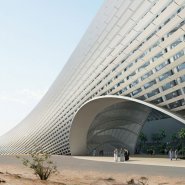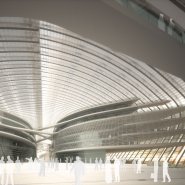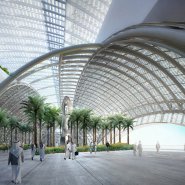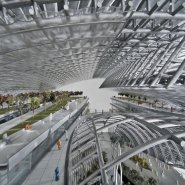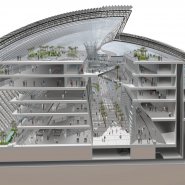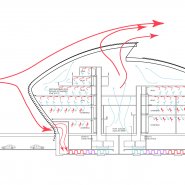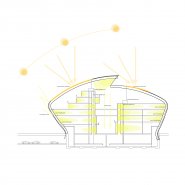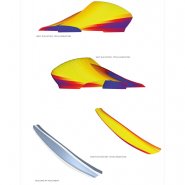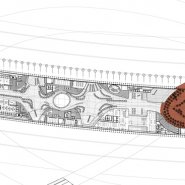KAPSARC Competition Entry
This award-winning competition entry for a research facility was designed to engage the intense climatic conditions of its desert setting. Incorporating vernacular design strategies into cutting-edge architecture and engineering systems, its evocative dune-like shape maintains a predominantly north-south aspect ratio, allowing for enhanced control of daylight and views—an effect reinforced by the gentle inward slope of the southern facade.
The exterior form catches and drives wind into a labyrinth integrated into the building foundation system, which allows for the pre-tempering of air and rejection of airborne particulate. This pre-cooled air is then fed to the air-handling plants serving the independent buildings of the superstructure or to the external street that joins with water features and landscaping to allow for passive cooling.
The building skin, which uses the high-performance, lightweight polymer ethylene tetrafluoroethylene (ETFE), was designed to have high corrosion resistance and strength over a wide temperature range. The cladding is also designed to intelligently respond to solar radiation and wind. The lower floors engage the inward-sloping skin, allowing for direct views with minimal thermal penalty. The upper floors disengage from the skin, allowing for a climatic buffer and the integration of a photovoltaic energy field to enhance buoyancy-driven wind-flow through the street.
Power for the building is completely supported by solar energy; hydrocarbon-based power at night is offset by the building-integrated photovoltaic system during the day on an annual basis. We address water scarcity in the region through stringent requirements for washroom fixtures, controlled evaporation of water features and reduced heat rejection demands from cooling towers.
A variety of outdoor shaded and protected areas and courtyards are designed for social interaction and informal activities. The central Al Mamsha circulation space encourages sustainable transit and creates a walkable thoroughfare. The benefits from walking include establishing relationships and encouraging spontaneous communications and collaboration, especially between disciplines.
The plant materials selection features indigenous species chosen for low water requirements. Interior atria and spaces within the spine of the building are planted, and include water features to promote comfort and human restoration. The irrigation design will minimize the use of potable water by collecting and storing stormwater and condensation from the mechanical coils and pipes within the air cooling system, treating waste water for irrigation and collecting and recycling irrigation water. Reclaimed condensate will be used fountains and water channels to further cool the interior space.
The design creates multiple zones within the building; users move from public to semi-public to semi-private to private spaces. Transitional spaces also pay homage to traditional design elements, including light and shadow, vernacular screens, and traditional courtyard design found in regional homes. These spaces also ease the transition between outdoor and indoor space, increasing thermal and visual comfort. Proximity to outdoor space and natural light were also considered; extensive use of daylighting creates a spatially dynamic and environmentally responsive interior.
